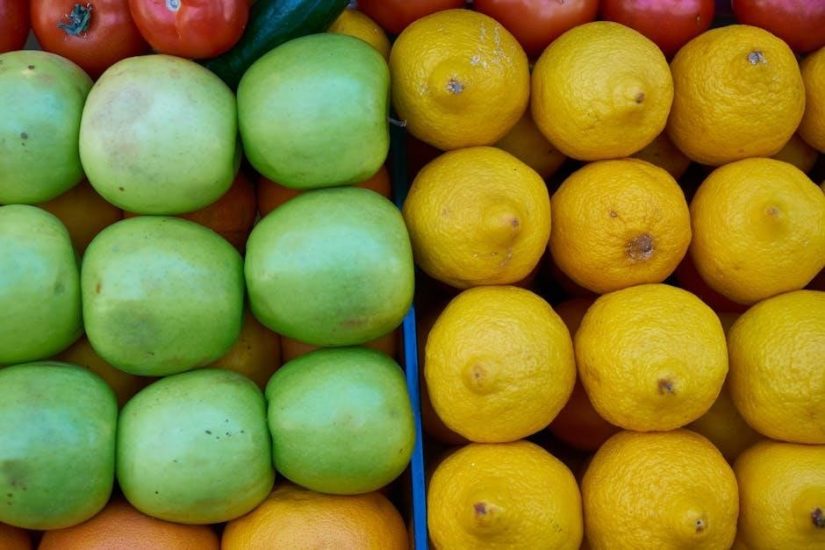The alkaline diet focuses on promoting a balanced pH level in the body by emphasizing alkaline-forming foods. It encourages consuming plenty of vegetables, fruits, and whole grains while limiting processed and acidic foods. Proponents believe this approach helps maintain energy levels, improve digestion, and support overall health. A key tool for this diet is the alkaline food chart, which categorizes foods based on their pH impact, helping individuals make informed dietary choices.
What is the Alkaline Diet?
The alkaline diet is a dietary approach focused on balancing the body’s pH levels by consuming foods that promote alkalinity. It suggests that by eating alkaline-forming foods, individuals can maintain a slightly alkaline internal environment, which is believed to support optimal health. The diet emphasizes whole, unprocessed foods like vegetables, fruits, nuts, and seeds, while reducing intake of acidic foods such as meats, dairy, and processed items. The goal is to achieve a balance where 70-80% of the diet consists of alkaline-forming foods and 20-30% acidic-forming foods. This balance is thought to enhance energy, digestion, and overall well-being, aligning with the body’s natural pH regulation.
Importance of pH Balance in the Body
Maintaining pH balance is crucial for optimal health, as the body functions best when its internal environment is slightly alkaline, around 7.39. A balanced pH supports enzyme activity, nutrient absorption, and overall bodily functions. Modern diets often promote acidity due to high intake of processed foods, meats, and sugars, leading to conditions like acidosis. The alkaline diet aims to counteract this by emphasizing alkaline-forming foods, which help restore pH balance, enhance energy levels, and reduce the risk of chronic diseases. Proper pH balance is essential for preventing illness and maintaining vitality, making it a cornerstone of the alkaline diet philosophy.
Benefits of an Alkaline Diet
The alkaline diet offers numerous health benefits, including improved energy levels, enhanced digestion, and reduced inflammation. By focusing on alkaline-forming foods, individuals may experience better nutrient absorption and a stronger immune system. This diet can also support weight management and improve overall well-being. Many find that it helps reduce symptoms of acidity, such as bloating and indigestion. Additionally, the emphasis on whole, unprocessed foods promotes a healthier lifestyle. While individual results may vary, adhering to an alkaline diet can be a sustainable way to achieve long-term health benefits and maintain a balanced dietary routine.

Understanding the Alkaline Food Chart
The alkaline food chart categorizes foods by their pH impact, aiding in meal planning and promoting dietary balance. It helps users visualize and implement an alkaline-focused diet effectively.
What is an Alkaline Food Chart?
An alkaline food chart is a comprehensive guide that categorizes foods based on their pH levels, distinguishing alkaline-forming from acidic-forming options. It provides detailed lists of vegetables, fruits, nuts, grains, and other foods, rating their alkalinity. This tool helps users make informed dietary choices to maintain a balanced pH level, promoting overall health and energy. The chart often includes visual aids like tables or graphs, making it easy to understand and apply. Printable versions are widely available, allowing individuals to reference the chart daily for meal planning and grocery shopping. It serves as a practical resource for those adopting an alkaline lifestyle.
How to Read and Interpret the Chart
The alkaline food chart is designed to simplify pH-level tracking by categorizing foods as alkaline-forming or acidic-forming; Foods are typically listed in tables or graphs, with ratings indicating their pH impact. Many charts use color-coding or symbols to highlight highly alkaline, moderately alkaline, neutral, acidic, or highly acidic options. Users can quickly identify which foods to prioritize, such as leafy greens and citrus fruits for alkalinity, and limit acidic choices like meats and processed items. The chart often includes a key or legend explaining the rating system, making it easy to interpret and apply to daily meals for a balanced diet.
Key Categories of Foods: Alkaline vs. Acidic
Foods are primarily categorized into alkaline-forming and acidic-forming based on their pH impact. Alkaline-forming foods, such as leafy greens, citrus fruits, and nuts, help maintain the body’s alkalinity. These include spinach, broccoli, lemons, and almonds. Acidic-forming foods, like meat, dairy, and processed items, can lower the body’s pH. Examples include beef, eggs, and sugary snacks. The chart distinguishes these categories, often highlighting neutral options like some grains. Understanding these groups helps individuals balance their diets, promoting overall health and energy. The chart serves as a guide to make informed choices, ensuring a predominance of alkaline-forming foods for optimal well-being.

Alkaline-Forming Foods
Alkaline-forming foods promote a balanced pH, fostering optimal health. Leafy greens, citrus fruits, nuts, and vegetables like spinach, lemons, almonds, and broccoli are key alkalinity promoters.
Vegetables and Their Alkalinity Levels
Vegetables are among the most alkaline-forming foods, playing a crucial role in balancing body pH. Leafy greens like spinach, kale, and Swiss chard are highly alkaline, as are broccoli, asparagus, and bell peppers. Root vegetables such as beets and sweet potatoes also contribute to alkalinity. These foods are rich in minerals like calcium, magnesium, and potassium, which help neutralize acidity. Incorporating a variety of colorful vegetables ensures a broad spectrum of nutrients and supports overall health. The alkaline food chart highlights these vegetables as essential components of a balanced diet, encouraging their regular consumption for optimal well-being.
Fruits That Promote Alkalinity
Fruits play a significant role in promoting alkalinity, with many being naturally alkaline-forming. Citrus fruits like lemons, grapefruits, and limes, though acidic in taste, are alkaline when metabolized. Tropical fruits such as mangoes, papayas, and pineapples are also highly alkaline. Berries like cranberries, cherries, and plums contribute to alkalinity as well. These fruits are rich in vitamins, minerals, and antioxidants, which help neutralize acidity and support overall health. Incorporating a variety of alkaline-forming fruits into your diet can enhance digestion, boost energy, and promote a balanced pH level. The alkaline food chart often highlights these fruits as essential for maintaining an alkaline-rich diet.
Nuts, Seeds, and Grains: Their Role in Alkalinity
Nuts, seeds, and certain grains are valuable components of an alkaline diet, offering essential nutrients and promoting alkalinity. Almonds, cashews, and pumpkin seeds are highly alkaline-forming, while chia seeds and flaxseeds provide omega-3 fatty acids and fiber. Quinoa, millet, and buckwheat are excellent alkaline grains, rich in protein and minerals. These foods help counteract acidity, support digestion, and provide sustained energy. Incorporating them into meals enhances overall health and aligns with the principles of the alkaline food chart, which categorizes them as beneficial for maintaining a balanced pH level.

Acid-Forming Foods
Acid-forming foods, such as meat, fish, poultry, eggs, and processed items, can lower the body’s pH. Limiting these helps maintain a balanced alkaline environment for optimal health.
Common Acidic Foods to Limit
Common acidic foods include meat, dairy, processed items, and sugary snacks. These foods can disrupt the body’s pH balance, leading to acidosis. Red meat, poultry, fish, and eggs are high in acidity, as are grains, bread, and pasta. Processed foods, fast food, and alcohol also contribute to acid formation. Consuming excessive acidic foods can strain the body’s regulatory systems and may lead to health issues like fatigue and inflammation. Limiting these foods and focusing on alkaline-forming options helps maintain a healthy pH balance. Aiming for a 70/30 ratio of alkaline to acidic foods is often recommended for optimal well-being and energy levels.
Processed Foods and Their Impact on pH Levels
Processed foods are highly acidic and can significantly disrupt the body’s pH balance. They often contain refined sugars, artificial additives, and unhealthy fats, which contribute to acid formation. Regular consumption of processed foods like fast food, packaged snacks, and sugary beverages can lead to chronic acidosis. These foods lack essential nutrients and are typically high in sodium and preservatives, which further exacerbate acidity. Over time, this can strain the body’s natural buffering system, leading to issues like fatigue, inflammation, and weakened immunity. Limiting processed foods is crucial for maintaining a balanced pH level and overall health. Opting for whole, nutrient-dense foods helps counteract their harmful effects.

Practical Application of the Alkaline Food Chart
The alkaline food chart serves as a practical guide for making dietary choices. It helps individuals identify and balance alkaline and acidic foods, promoting better pH harmony. By focusing on whole, nutrient-rich foods and minimizing processed items, users can apply the chart to create meals that support their health goals, fostering improved digestion, energy, and overall well-being.
The 70/30 Rule: Balancing Your Diet
The 70/30 rule is a foundational guideline for the alkaline diet, suggesting that 70% of daily calories come from alkaline-forming foods, while 30% can be acidic. This balance helps maintain the body’s natural pH equilibrium, preventing excessive acidity. Alkaline-forming foods include leafy greens, vegetables, and certain fruits, while acidic foods like meats, grains, and processed items should be consumed in moderation. By adhering to this ratio, individuals can support their body’s optimal functioning, enhance energy levels, and reduce the risk of chronic diseases. The rule is flexible, allowing personal adjustments based on health goals and lifestyle needs.
Creating a Sample Meal Plan
A sample alkaline meal plan can guide daily food choices, ensuring a balanced intake of alkaline-forming foods. Breakfast might include a green smoothie with spinach, cucumber, and lemon, paired with almond milk. Lunch could feature a mixed salad with arugula, avocado, and cherry tomatoes, dressed with olive oil and lemon juice. For dinner, roasted vegetables like broccoli, Brussels sprouts, and sweet potatoes are ideal. Snacks can include raw almonds, fresh berries, or celery sticks with almond butter. Hydration is key, so drink plenty of water and herbal teas. This plan aligns with the 70/30 rule, providing a practical and sustainable approach to alkaline eating.

Downloading and Using the Alkaline Food Chart PDF
The alkaline food chart PDF is a practical guide to identifying alkaline and acidic foods. Download it for free from trusted sources like Greenopedia.com or RossBridgeford.com. Print and use it daily to plan meals, ensuring a balanced diet with 70% alkaline and 30% acidic foods; This chart simplifies healthy eating by categorizing foods clearly, helping you make informed choices for optimal health and energy.
Where to Find Reliable Alkaline Food Charts
Reliable alkaline food charts can be found on trusted websites like Greenopedia.com and RossBridgeford.com. These platforms offer free, downloadable PDFs that categorize foods based on their alkaline or acidic properties. Additional resources include AcidWatchersDiet.com and health-focused blogs that provide comprehensive guides. Many charts are printable, making them easy to reference daily. Look for sources that offer detailed lists, such as the Energise Acid/Alkaline Food List, which includes vegetables, fruits, nuts, and more. When downloading, ensure the chart is updated and aligned with your dietary goals. Using a trusted chart helps maintain consistency and clarity in your alkaline journey.
How to Print and Use the Chart for Daily Reference
To effectively use the alkaline food chart, start by downloading a reliable PDF version from trusted sources like Greenopedia.com or RossBridgeford.com. Print the chart on high-quality paper for clarity and consider laminating it for durability. Place it in a visible location, such as your kitchen fridge, to serve as a daily reminder. Use the chart to plan meals, ensuring a balance of 70-30 or 80-20 alkaline to acidic foods. Refer to it while grocery shopping to make informed choices. Consistency is key, so keep the chart handy to maintain your dietary goals and promote long-term health benefits.

Common Misconceptions About the Alkaline Diet
The alkaline diet doesn’t drastically change blood pH but focuses on promoting a balanced intake of alkaline-forming foods. It’s not about eliminating all acidic foods but maintaining moderation.
Separating Fact from Fiction
While the alkaline diet is often misunderstood, it’s not about drastically altering blood pH levels, as the body naturally regulates this. The diet focuses on promoting a balance by increasing alkaline-forming foods like vegetables and fruits, which can support digestion, energy, and overall health. A common misconception is that all acidic foods must be avoided; instead, moderation is key. The 70/30 rule suggests alkaline-forming foods should make up most of the diet, with acidic foods consumed in smaller portions. This approach isn’t a quick fix but a sustainable way to enhance wellness. It’s important to rely on credible sources, like the alkaline food chart, for accurate guidance.
Addressing Criticisms of the Alkaline Diet
Critics argue the alkaline diet lacks robust scientific evidence and oversimplifies the body’s complex pH regulation. The diet’s focus on avoiding acidic foods is often seen as overly restrictive, potentially leading to nutrient deficiencies if essential food groups like proteins or whole grains are severely limited. Some experts emphasize that the body naturally maintains its pH balance, making drastic dietary changes unnecessary. However, supporters argue the diet’s emphasis on whole, unprocessed foods promotes overall health, even if the pH impact is minimal. The 70/30 rule offers a balanced approach, and the alkaline food chart serves as a helpful guide for mindful eating, rather than a rigid framework.
The alkaline diet, guided by a food chart, offers a balanced path to improved health and energy. Start your journey with informed choices for a vibrant life.
Final Thoughts on the Alkaline Diet
The alkaline diet offers a balanced approach to nutrition, emphasizing whole, nutrient-rich foods to support overall health. By understanding and using the alkaline food chart, individuals can make informed choices to promote a healthy pH balance. The diet’s focus on vegetables, fruits, and whole grains aligns with broader health recommendations, making it a sustainable and practical option. While it may require initial adjustments, the potential benefits—such as improved energy, digestion, and reduced inflammation—make it worth exploring. Ultimately, the alkaline diet encourages a mindful eating habit, helping individuals prioritize their well-being and foster a vibrant, healthy lifestyle.
Encouragement to Start Your Alkaline Journey
Embracing the alkaline diet can be a transformative step toward better health and vitality. With the guidance of an alkaline food chart, you can easily identify and incorporate nutrient-rich, alkaline-forming foods into your meals. Start by making small, gradual changes to your diet, focusing on adding more vegetables, fruits, and whole grains. The alkaline food chart PDF is a valuable resource to keep handy, helping you stay on track and make informed choices. Remember, it’s not about perfection but progress. By committing to this journey, you’re investing in your long-term well-being and paving the way for a healthier, more energized life. Take the first step today!
